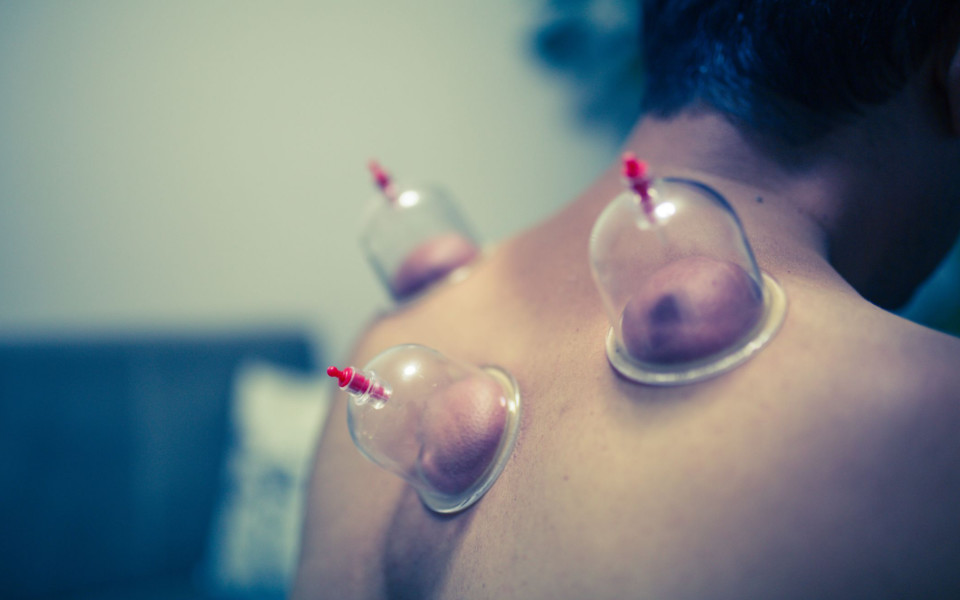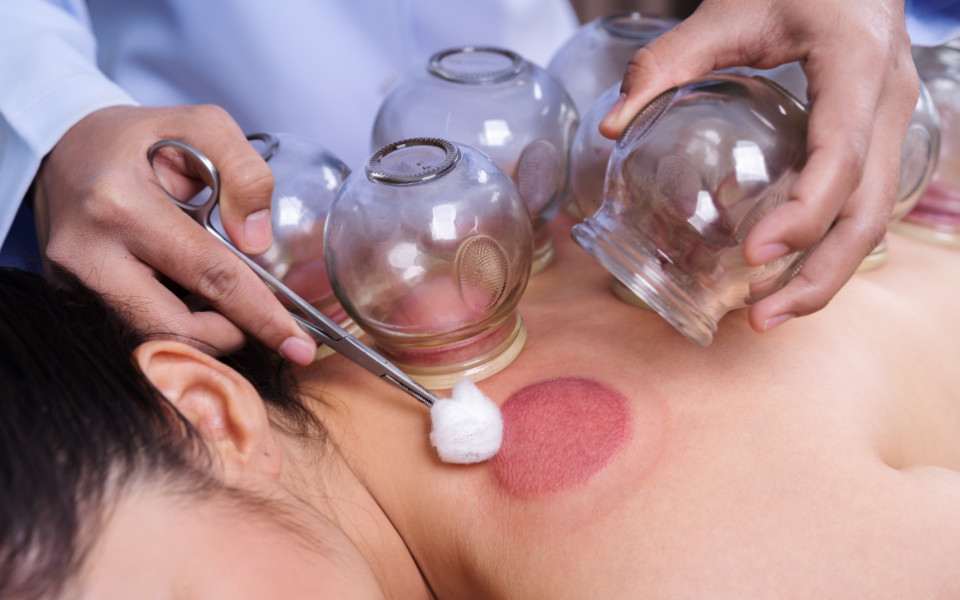The idea might sound ludicrous that a mere suction cup can improve health and wellness. What’s more astonishing is that this ancient treatment method which sprung up in various ancient cultures, Egyptians, Chinese, Koreans, Tibetan, Greeks, Islam, and Europeans, is still being practiced today. Absurd as it may sound, research on medicinal theories and on the health benefits of cupping or hijama therapy may change your mind. Furthermore, the numerous variations to this ancient wellness-promoting treatment may soon be vindicated by scientific evidence.
What is Cupping Therapy?
Cupping therapy or Hijama cupping therapy is an ancient treatment method for the promotion of overall health and wellness. It involves the application of suction on the skin in specific areas of the body. The placement of the suction cup is crucial because according to hijama practice, a certain area of the body is connected to a certain organ or organ system. According to hijama therapy, the suction cup will draw blood towards the uppermost layer of the skin which may promote health.
According to historical practice, there are two main types of cupping therapy, one that involves creating superficial breaks in the skin and another that does not. The former is known as wet cupping therapy while the latter is called dry cupping therapy. Innovations in hijama cupping have spawned numerous variations like flash cupping and cupping massage. The suction cup therapy can also be categorized by the method of how suction is generated; fire cupping, manual suction cupping, and automatic suction cupping. There are also certain variations of hijama which involve the application of other therapeutic practices; this includes needle cupping, moxa cupping, herbal cupping, magnetic cupping, laser cupping, electrical stimulation cupping, water cupping, and aquatic cupping. Cupping therapy could also be categorized based on the target area and purpose. Cosmetic cupping, facial cupping, sports cupping, and abdominal cupping are some examples.

Health Benefits of Cupping Therapy
Cupping therapy is not to be used as a treatment method for a specific disease. Hijama cupping therapy is for general health promotion and wellness. Despite these, studies were conducted to investigate its health benefits and its potential to treat certain diseases. These studies have claimed that cupping therapy can aid in the removal of excess fluids and toxins, loosen adhesions that revitalizes connective tissues, increase blood flow to skin and muscles, stimulate the peripheral nervous system, improve pain management, improve blood pressure management, and improve immune system functioning.
1. Improved Pain Control
According to a study, cupping therapy can encourage the production of endogenous opioids within the brain. Due to this, the body experiences a significant level of comfort and relaxation after treatment.
In a separate study, researchers claimed that cupping therapy’s ability to improve pain control has to do with its ability to change the lymphocyte-neutrophil balance in the affected area. According to this study, cupping therapy can increase neutrophils in the affected area which leads to the reduction of pain.
As mentioned earlier, historically, there are only two main types of hijama cupping therapy, wet cupping therapy and dry cupping therapy. There are some studies that focused on wet cupping therapy. This type of hijama therapy involves the creation of superficial incisions so that a small amount of blood is sucked from the affected area. Some researchers claimed that the process of removing small amounts of blood can relieve pain symptoms. Furthermore, the small loss of blood can lead to increased red blood cell production and population.
Other studies claimed that cupping therapy’s ability to control pain is brought about by its ability to reduce P substance and inflammation. It is believed that the suction generated by hijama therapy induces changes in the biomechanical properties of the skin which brings about the reduction in P substance and inflammation.
2. Functional Improvements
Some studies claim that the main reason why cupping therapy can improve your general health is because of the fact that this treatment methodology is able to remove toxins and waste. Suction applied to the skin can improve circulation in that area which facilitates the removal of toxins and waste. The improvement in circulation also improves endothelial cell repair and hastens the creation and repair of blood vessels. Moreover, cupping allows for the removal of noxious materials from the skin’s interstitial fluid. All of these ultimately lead to the overall improvement of a person’s functional capacity. In other words, the improvement of circulation and removal of toxin that is brought about by hijama therapy can improve a person’s ability to perform day to day tasks.
3. Prevention of Cardiovascular Diseases
Cardiovascular diseases and atherosclerosis is often brought about by high levels of Low-Density Lipoproteins (LDL). One study claims that cupping therapy may reduce LDL levels and total cholesterol levels. Aside from that, hijama therapy may also improve the LDL:HDL (high-density lipoprotein) ratio. All of these positive effects on a person’s lipid profile would lead to the improvement of their cardiovascular health and the prevention of atherosclerosis.
A different study offers a different explanation as to why cupping therapy can aid in the prevention of cardiovascular diseases. According to this research paper, in addition to improving blood flow in the skin’s capillaries, wet hijama therapy may also stimulate the autonomic nervous system. The controlled injury that the wet cupping therapy would inflict on the skin may stimulate several hormonal, autonomic, and immune reactions within the sympathetic and parasympathetic nerves. The stimulation of both nerves may lead to improvements in how the body regulates the nerve signals to the heart. With the improvements in the nerve signals to the heart, cupping therapy offers cardio-protective effects to those who would undergo this treatment procedure.
4. Muscle Relaxation
Still, on the activation of the parasympathetic nerves, cupping therapy may help relax the body’s muscles. Wet hijama therapy leads to insignificant blood loss and vasodilation which stimulates the parasympathetic nerves. This ultimately leads to muscle relaxation throughout the body.
5. Toxin Elimination
There are researchers who claim that hijama therapy’s ability to improve a person’s overall health is a direct result of its ability to remove toxins. In fact, there are research papers that conducted an in-depth investigation as to why this is so. According to the papers, the suction generated by cupping the skin can dilate the capillary beneath it and release vasodilators such as adenosine, noradrenaline, and histamine. These vasodilators are capable of improving circulation and they are also capable of facilitating the removal of trapped toxins. It is believed that trapped toxins are one of the reasons why a person may feel generally unwell. Due to the fact that cupping may facilitate the removal of trapped toxins, researchers, therefore, concluded that hijama therapy may improve overall wellness.
6. Immune Regulation
There are studies that claim that Hijama therapy can improve our body’s ability to regulate the immune system. To be more specific, cupping therapy can improve complement system activation and the management of cellular immunity.
7. Blood Sugar Management
Oxidative stress has been proposed as one factor that may lead to the development of diabetes. According to a study which was published in Switzerland Research Park Journal, cupping therapy may have a positive effect on a person’s oxidative stress levels which may aid in the prevention of type 2 diabetes.
Does Cupping Therapy Work?

People would simply be skeptical if they were told that cupping therapy does work. In Chinese alternative medicine, the rationale behind cupping therapy is based on Qi or vital force. According to Chinese medicine, hijama helps to clear up blocked or disrupted qi which returns balance to our vital force. For those accustomed to the western way of scientific thinking, qi is not scientific and therefore basing cupping therapy’s effectiveness on the principle of qi is not enough. With that said, a group of researchers published a study reviewing other studies which aimed to establish a scientific basis for cupping therapy. According to this study, cupping therapy’s pain reduction effect can be attributed to either the Pain Gate Theory, Diffuse Noxious Inhibitory Control Theory, or Reflex Zone Theory. It’s anti-inflammatory effects can be explained by the nitric oxide theory, Activation of Immune System theory for its immunomodulation effects, and blood detoxification theory for its hematological adjustment effects.
1. Pain Gate Theory
Studies have shown that Hijama cupping therapy can be a great way of managing pain. The analgesic effect of cupping therapy may be explained by the Pain Gate Theory. According to this theory, pain signals from our nerves are bottle-necked at the dorsal horn of our spinal cord before it reaches the brain. This area acts as a gate for the pain signals. How much pain signals are allowed through the “gate” is determined by the large fibre activity and small fibre activity. When there is large nerve fibre activity present, the “gate” is narrower or even closed. This hampers the pain signals in their journey towards the brain. As a result, the pain is felt at a lesser intensity. Hijama cupping therapy is thought to stimulate large fibre activity which ultimately leads to better pain management.
2. Diffuse Noxious Inhibitory Control Theory
The phenomenon of ‘pain inhibiting pain’ may be explained by the Diffuse Noxious Inhibitory Control (DNIC) theory. According to a study published in France, the DNIC is the control system found within the dorsal horn of the spinal cord. This control system filters pain signals going to the brain. When there is more than one pain signal going through this system, it loses focus and the intensity of the pain is diminished. Cupping therapy can be thought of as a therapy that takes advantage of DNIC. Since it introduces a low level of pain, the DNIC cannot focus on a single pain signal and it is therefore diminished in intensity.
3. Nitric Oxide Theory
Nitric Oxide is a neurotransmitter that is involved in many physiologic processes. They have been found to work within the dorsal horn of the spinal cord. The area of the central nervous system is known as the “pain gate”. Nitric oxide is a neurotransmitter that mediates the pain-reducing effects of analgesic drugs. Cupping therapy may promote the release of the neurotransmitter nitric oxide which leads to better pain management. The way cupping therapy does this is through suction. By applying suction on the capillaries, the nitric oxide present in the endothelial cells of the capillaries is released into the bloodstream.
4. Activation of Immune System Theory
Cupping therapy may be able to regulate immunoglobulins, essential proteins that have several immune functions. This is just one of the immune promoting effects that cupping therapy potentially possesses. There are several other studies that suggest that cupping therapy can regulate the complementary system. There are also some studies that claimed that cupping therapy can help the flow of lymph fluid. Moreover, several studies have claimed that hijama therapy can help prevent autoimmune reactions. Still, an extensive review of these studies is needed before the idea that Cupping Therapy can improve immune function, would be accepted.
5. Blood Detoxification Theory
When the biochemistry of venous blood and cupping blood are compared they turn out to be vastly different. Several studies have shown that blood extracted through wet hijama contains significantly more urea, uric acid, HDL, LDL, serum glutamic oxaloacetic transaminase and iron compared to venous blood. This finding led several researchers to believe that the act of wet cupping can help eliminate harmful components in our blood. Furthermore, this elimination of harmful substances can lead to health promotion. For example, since wet cupping can lead to the removal of uric acid, this treatment methodology may alleviate arthritis symptoms. LDL is an atherosclerotic lipid, in other words, it is the type of fat that encourages the buildup of plaques in our blood vessels. Since wet hijama therapy removes LDL from blood, this treatment methodology may decrease a person’s likelihood of developing blood vessel plaques.
How to Perform Cupping Therapy

Although it is not ideal, cupping therapy can be done at home. This procedure is safe for individuals who don’t have any bleeding or clotting disorders. The most popular do-it-yourself cupping method is the fire cupping method. The materials needed and procedure for fire hijama therapy is detailed below:
Materials
- A towel
- Pieces of cotton
- Cups (preferably the glass cups that were designed for cupping)
- Stove
- A large pot with water for boiling glasswares
- Dishwashing soap
- Basin
- Kettle for heating up water
- Bath soap
- 70% Isopropyl alcohol
- Lotion
- Paper towels for drying
- Candle
- Tweezers or forceps
Procedure
- Before anything else, ask the patient to take a bath. Instruct them to wash their back thoroughly as well.
- While the patient is taking a bath, wash the cups that you would use for the hijama therapy with water and dishwashing soap. Sterilize them in boiling water for one minute. After one minute is up, let the cups soak and cool.
- For patients who want to be relieved of back pains, ask the patient to pinpoint the area in their back for which the pain originates. You shall place the cups over these areas later on. For those patients who want to promote general wellness through hijama therapy, you can search online for some guides.
- Be mindful of skin blemishes, bruises, ulcers, etc., don’t apply suction in areas like these
- Clean the back of the patient thoroughly with a soapy cloth. Rinse off the soap with a cloth that is soaked in lukewarm water. Dry the back completely and then disinfect it with 70% isopropyl alcohol. Let the alcohol air dry and then apply some lotion.
- Check if your cups are already cool to touch. Dry them if they are.
- To generate suction, you must heat the insides of the cups with fire. Light a candle. Use your tweezers to grab a piece of cotton. Soak the cotton in alcohol. Then bring the cotton towards the candle’s fire. Once you see blue flames coming from the cotton. Hold one of the cups in an inverted position and bring the flaming cotton inside. It should only take several seconds for the flames in the cotton to die as the oxygen inside the cup is used up by the flames.
- As soon as the oxygen is removed from the inside of the cup, place the cup over the target areas and allow the cup to suck the skin.
- Repeat steps 5 to 7 until all target areas are covered.
Facial Cupping
Facial cupping is essentially hijama therapy that is done on the face. They are the same except for the suction strength employed. You cannot use the same strength of suction in hijama therapy for the face because the facial skin is too delicate. Instead, a weaker suction is used for facial cupping generated by an instrument that is designed for facial cupping.
Facial cupping can be done at home by purchasing the facial cupping kit. However, it is advised that people have their facial cupping performed by a professional.
The health benefits of hijama therapy are carried over to facial cupping. These health benefits include increased oxygen-rich blood circulation, improved collagen production which strengthens skin and connective tissues, and muscle tension relaxation.
1. Improved Oxygen-rich Blood Circulation in the Face
In facial cupping, the low strength suction generated by the facial cupping kit gently pulls the upper layers of the skin away from the deeper layers of the fascia. The resulting space created would promote blood flow within the area. With improved circulation, the skin cells would receive more oxygen and nutrients.
2. Strengthened Facial Skin and Connective Tissues, and Increased Collagen Production
The suction applied to the facial skin during a facial cupping session would loosen adhesions within tissues. This loosening of adhesions would facilitate the drainage of excess fluids and toxins. Moreover, the drainage of toxins, along with the improvement of circulation, leads to the revitalization of connective tissues.
3. Relaxes Muscle Tension
Muscles in the face may sometimes tense up due to stress. Fortunately, facial cupping, like hijama therapy, can help loosen up tense muscles in the face.
4. Effect of Facial Cupping
Due to the aforementioned positive effects of facial cupping, it has been reported that the practice of facial hijama can help make the skin look brighter. Moreover, facial cupping may be able to minimize scars, fine lines, and wrinkles. Since the muscles are loosened, the contours of the face would be toned. The removal of toxins and excess fluids would decrease puffiness and improve oil production regulation. Moreover, since circulation in the facial skin is improved, nutrient delivery and cosmetic product absorption is also improved.
Possible Side Effects
As long as the patient doesn’t have any bleeding or clotting disorders, facial cupping is generally safe. Despite that, there have been reports of dizziness, lightheadedness, nausea, and cold sweats in some of the patients. Although not much is known about them, the side effects are very rare.
Cupping Therapy Side Effects
Cupping Therapy is not advisable for those who have skin conditions and bleeding and clotting disorders. The suction in cupping therapy may irritate a person’s skin which may exacerbate any pre-existing skin conditions. Cupping therapy also dilates the capillary and allows blood to move into the interstitial fluid in between cells. For those who have clotting and bleeding disorders, their condition might lead to excessive leakage of capillary blood.
There are rare cases of intracranial bleeding or bleeding inside the skull after hijama cupping therapy was done on the scalp. By simply prohibiting cupping therapy on the scalp, this rare side effect can be avoided.
For wet cupping therapy, it is better to have it done by a licensed therapist. Wet cupping therapy involves wounding the patient. If the equipment used to wound the patient is not sterile, then the therapist is endangering the patient’s life. The usage of non-sterile equipment in creating incisions could lead to the spread of bloodborne diseases such as HIV, Hepatitis B, and Hepatitis C. Moreover, if the cup is not sterile, the cup itself may transmit bloodborne diseases to the patient. This is due to the fact that the patient’s wound is soaked in their own blood, and the patient’s blood is in contact with the cup. A licensed wet hijama therapist is aware of these bloodborne diseases and would sterilize their equipment thoroughly before using it on a patient.
Besides bloodborne diseases, using non-sterile equipment in performing Wet Cupping Therapy may lead to infections. The inside of the cup would be in contact with the blood for an extended period of time, and the blood would be in contact with the patient’s open wound. If there are bacteria present inside the cup, they could grow and multiply in the nutrient-rich blood and infect the patient’s open wound.
Wrap Up
Hijama cupping therapy is an ancient medicinal practice that was adopted by various cultures. Despite being ancient, this therapeutic procedure is still being practiced today in modern traditional medicine. Ancient text may offer mystical explanations as to how hijama therapy brings about its positive effect, scientific studies using modern techniques have been conducted to explain its positive effects. With the available scientific information at present, researchers have claimed that cupping therapy can improve pain control, improve a person’s ability to carry out day-to-day tasks, help prevent cardiovascular disease, facilitate muscle relaxation, facilitate toxin elimination, improve immune regulation, and improve blood sugar management.


